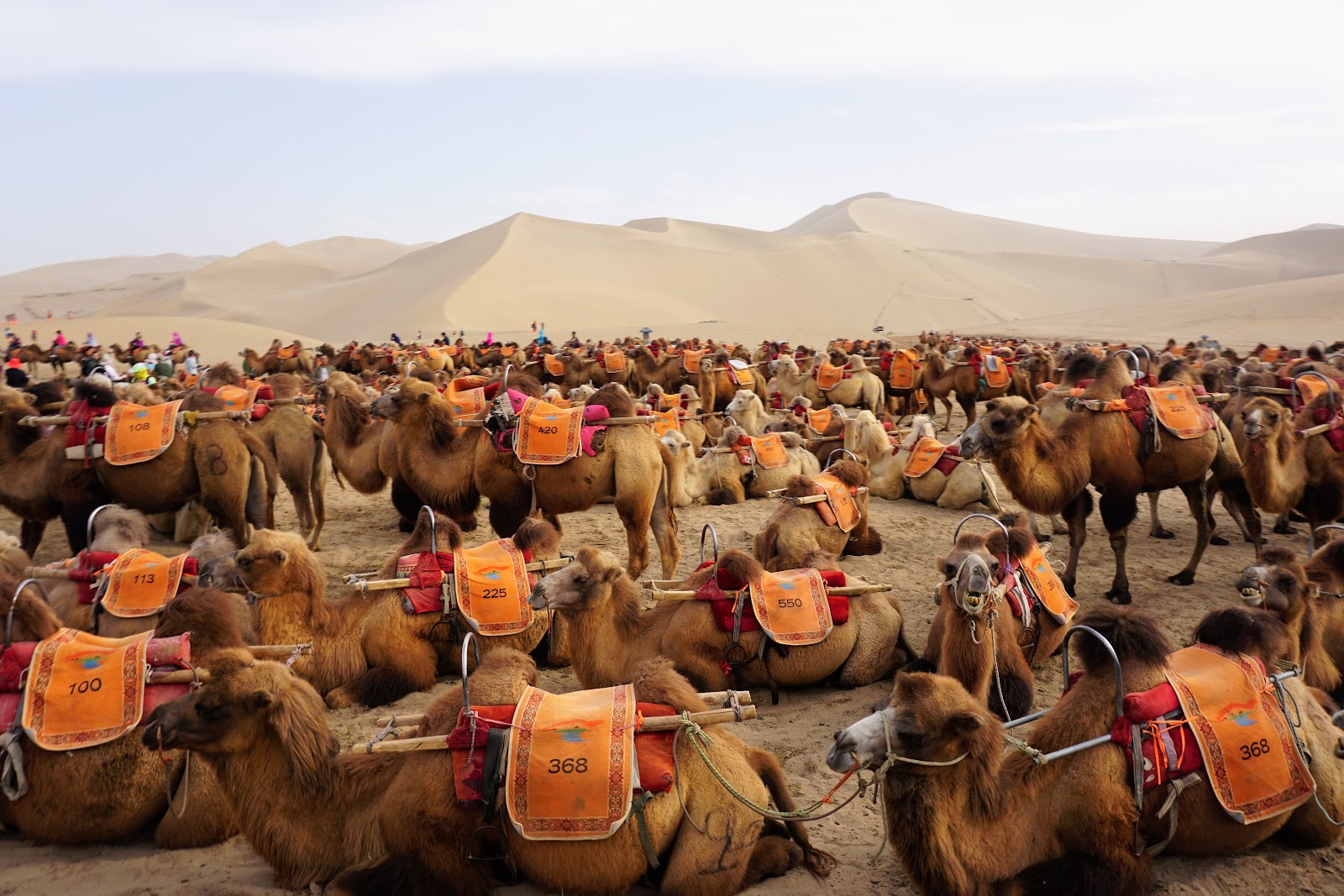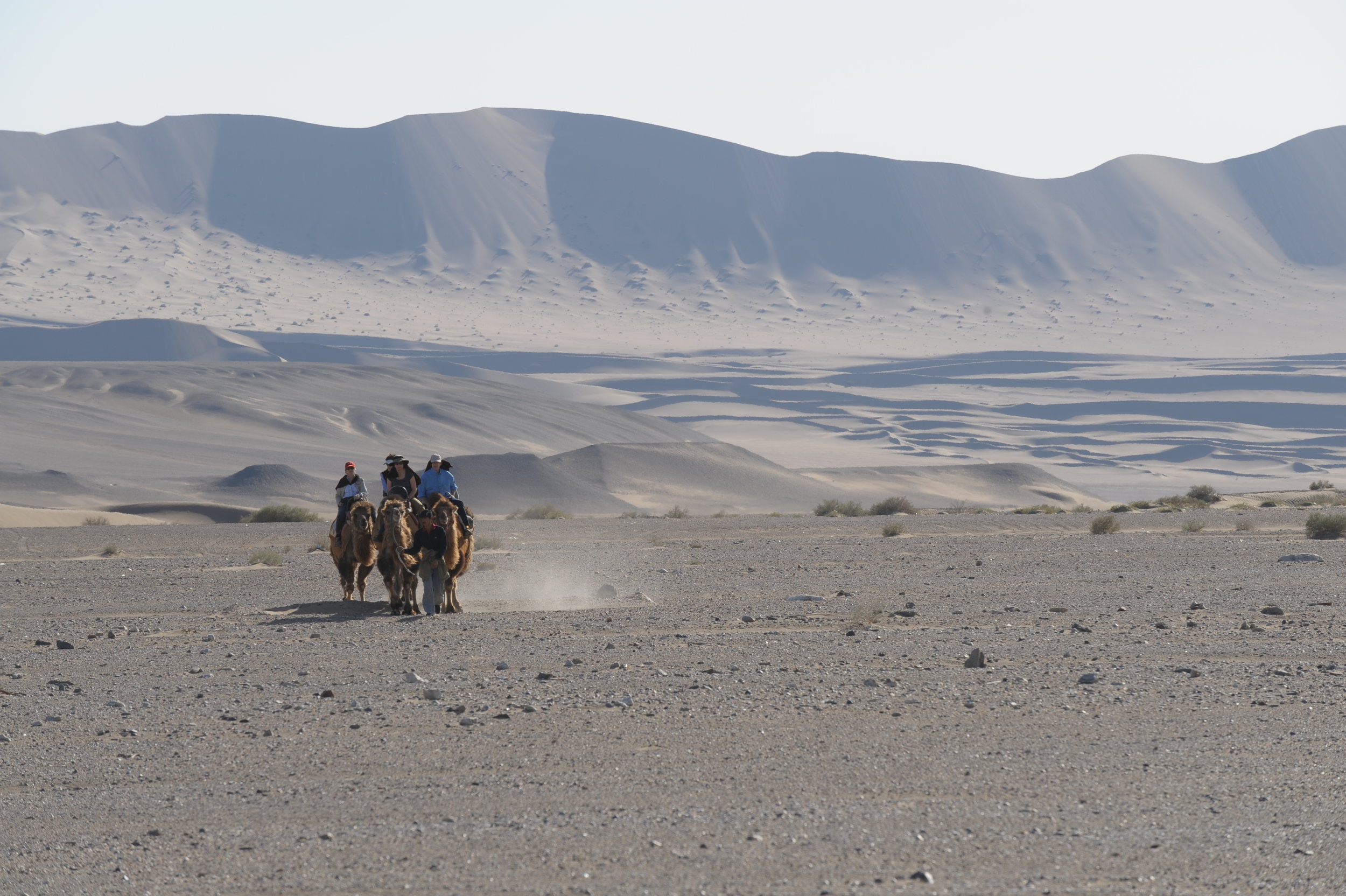CAMEL RIDING
When designing our Silk Road expedition many years ago, I was keen to add a camel experience along the way. Combining the vastness of the desert and trying to recreate what 11th century merchants had to face along their journey from oasis to oasis, from sand storms, robbers, lack of water and especially spend hours on end wedged between a camel’s humps. Bactrian camels are incredible, they served as pack animals for centuries in Central Asia, have a high tolerance to cold, drought and high altitudes and can go without water for months on end. One of the most incredible spots combining both desert and camels is in Dunhuang, western China. But China being what it is, the camel ride is a circus with hundreds of camels in a parking lot, everything run in a military fashion, all the tours booked by travel agents lining up, buses everywhere….
No way….NO WAY I would do this.
So with the help of our local guides, we found a young camel owner who was keen to make extra $$ and agreed to walk his 12 camels one hour away from this s**t show in an area we had scoped that was close to a road where we could bring our travelers, and close to large sand dunes. And not a soul as far as the eye could see. Just the noise of camels walking and the desert silence….. the experience was delivered and people “got it”, they understood what it meant.
LITTLE KNOWN FACT:
Paper was actually one of the most important things to be traded on the Silk Road. It became the most used writing material in Eurasia and had a much bigger effect on history than silk did.
BEST MONTH TO VISIT:
April/May and September/October
Longitude 80 offers a full China portion of the Silk Road that can lasts up to 21 days retracing the major oasis towns and offers glimpses of the Great Wall, frescoes in caves, desert crossings and incredible art and culture along the way.



